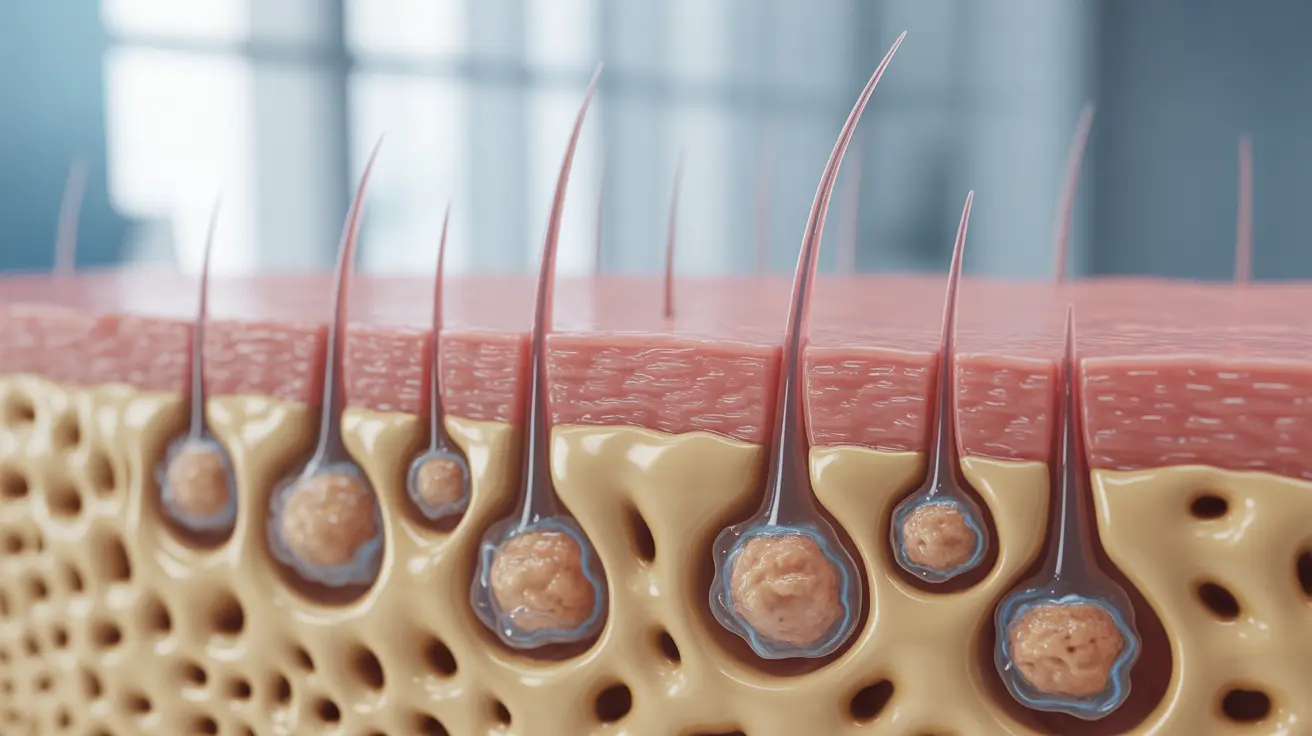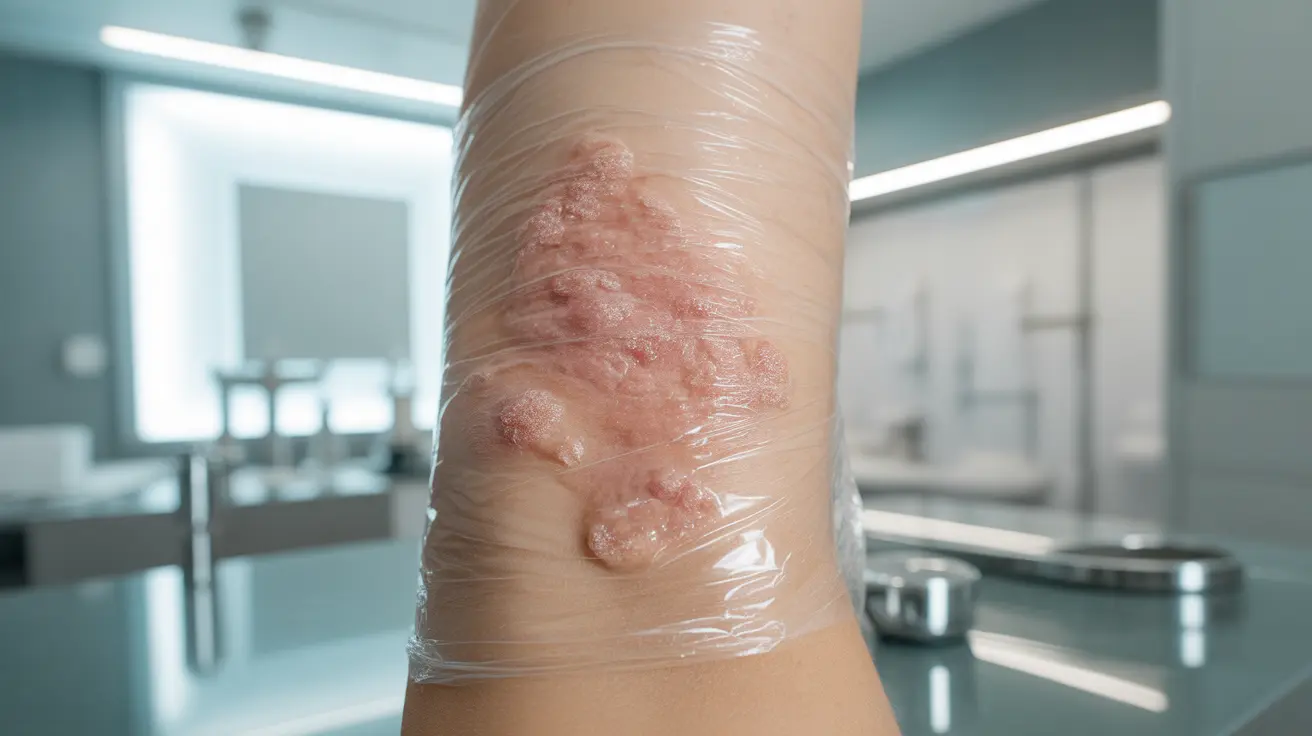The relationship between testosterone and acne is one of the most significant factors in understanding why breakouts occur, particularly during puberty and hormonal fluctuations. While many people associate acne with teenage years, testosterone-related skin issues can affect individuals of all ages, including women experiencing hormonal changes or those undergoing testosterone therapy.
Understanding why testosterone triggers acne involves examining how this hormone affects your skin's oil production and creates conditions favorable for bacterial growth. This knowledge is crucial for anyone dealing with persistent breakouts or considering hormone-related treatments that might impact their skin health.
The Science Behind Testosterone and Acne Formation
Testosterone directly influences acne development through its interaction with sebaceous glands, the tiny oil-producing structures located within your hair follicles. When testosterone levels increase, these glands receive signals to produce more sebum, the natural oil that normally helps protect and moisturize your skin.
However, excessive sebum production creates problems. The overproduction of this oily substance combines with dead skin cells to clog pores, creating an ideal environment for Propionibacterium acnes (P. acnes) bacteria to thrive. This bacterial overgrowth leads to inflammation, resulting in the red, swollen lesions characteristic of acne breakouts.
The process becomes more complex when considering dihydrotestosterone (DHT), a potent derivative of testosterone. DHT has an even stronger effect on sebaceous glands than testosterone itself, which explains why some individuals with relatively normal testosterone levels still experience significant acne issues.
How Testosterone Affects Sebum Production
Sebaceous glands contain androgen receptors that are particularly sensitive to testosterone and its derivatives. When testosterone binds to these receptors, it triggers a cascade of cellular events that ultimately increase both the size of sebaceous glands and their oil production capacity.
This increased sebum production doesn't just mean more oil on your skin's surface. The composition of the sebum also changes, becoming thicker and more likely to create plugs within hair follicles. These plugs, known as comedones, form the foundation for both blackheads and whiteheads.
Additionally, testosterone influences the rate at which skin cells are produced and shed. Higher testosterone levels can lead to increased cell turnover, providing more dead skin cells that can mix with excess sebum to create stubborn clogs.
Testosterone-Related Acne in Women
While women naturally have lower testosterone levels than men, they can still experience testosterone-related acne under specific circumstances. Conditions such as polycystic ovary syndrome (PCOS), certain medications, and hormonal fluctuations during menstrual cycles can all lead to elevated androgen levels in women.
Women with PCOS often experience acne along the jawline, chin, and lower face, areas where androgen-sensitive sebaceous glands are concentrated. This pattern differs from typical teenage acne, which tends to appear more prominently on the forehead, nose, and cheeks.
Hormonal birth control can also influence testosterone-related acne in women. Some contraceptives contain progestins that have androgenic properties, potentially worsening acne, while others may help improve skin conditions by reducing overall androgen activity.
Duration and Treatment of Testosterone-Induced Acne
The duration of testosterone-induced acne varies significantly depending on the underlying cause. For individuals going through natural hormonal changes like puberty, acne may persist for several years before gradually improving as hormone levels stabilize in early adulthood.
Those experiencing acne due to testosterone replacement therapy or other medical treatments may notice improvements within a few months of adjusting their treatment regimen or implementing targeted skincare approaches. However, it's important to work with healthcare providers to balance the benefits of hormone therapy against potential skin side effects.
Treatment approaches for testosterone-related acne often include topical retinoids, which help normalize skin cell turnover and prevent clog formation. Topical or oral antibiotics may be prescribed to address bacterial overgrowth, while hormonal treatments like spironolactone can help reduce androgen activity in appropriate candidates.
Types of Acne Associated with High Testosterone
High testosterone levels tend to produce specific types of acne lesions that differ from other forms of breakouts. Inflammatory acne, characterized by red, painful papules and pustules, is particularly common with elevated androgen levels due to the increased bacterial activity in clogged, oil-rich pores.
Cystic acne, the most severe form of acne, is also strongly associated with high testosterone levels. These deep, painful nodules form when inflammation extends far beneath the skin's surface, often requiring professional treatment to prevent permanent scarring.
Comedonal acne, featuring numerous blackheads and whiteheads, frequently accompanies testosterone-related breakouts due to the hormone's effect on sebum production and skin cell turnover. This type of acne is often concentrated in areas with high concentrations of sebaceous glands, such as the T-zone of the face, chest, and back.
Managing Acne from Hormonal Therapy
Individuals undergoing testosterone replacement therapy or other hormonal treatments should work closely with their healthcare providers to monitor and manage potential skin side effects. Starting with lower doses and gradually increasing them can sometimes help minimize acne development while still achieving therapeutic goals.
Proactive skincare measures become particularly important when beginning hormonal therapy. Establishing a consistent routine with gentle cleansing, appropriate moisturizing, and targeted acne treatments can help prevent severe breakouts before they develop.
In some cases, healthcare providers may prescribe preventive medications or recommend specific skincare products before beginning hormone therapy, especially for individuals with a history of acne or those at higher risk for developing testosterone-related skin issues.
Frequently Asked Questions
Why does increased testosterone cause acne and how does it affect sebum production?
Testosterone causes acne by binding to androgen receptors in sebaceous glands, triggering increased sebum production. This excess oil combines with dead skin cells to clog pores, creating an environment where acne-causing bacteria can multiply and cause inflammation. The hormone also increases the size of oil glands and alters sebum composition, making it thicker and more likely to form plugs in hair follicles.
Can testosterone-related acne affect women, and what causes it in women with lower testosterone levels?
Yes, women can experience testosterone-related acne despite having lower baseline testosterone levels. Common causes include polycystic ovary syndrome (PCOS), hormonal fluctuations during menstrual cycles, certain medications, and birth control pills containing androgenic progestins. Women's skin may be more sensitive to even small increases in androgens, leading to acne along the jawline and lower face.
How long does testosterone-induced acne typically last, and what treatments are effective?
The duration varies depending on the cause. Puberty-related acne may last several years, while therapy-induced acne often improves within months of treatment adjustment. Effective treatments include topical retinoids, antibiotics for bacterial control, hormonal therapies like spironolactone, and professional procedures. Working with healthcare providers ensures appropriate treatment selection based on individual circumstances.
What are the common types of acne caused by high testosterone levels?
High testosterone typically causes inflammatory acne with red, painful papules and pustules, cystic acne featuring deep, painful nodules, and comedonal acne with numerous blackheads and whiteheads. These types often appear on areas with high sebaceous gland concentrations, including the face, chest, and back, and tend to be more severe than acne from other causes.
How can hormonal therapy or testosterone replacement therapy lead to acne, and how is it managed?
Hormonal therapy increases testosterone or similar androgens, stimulating sebaceous glands to produce excess oil and leading to clogged pores and bacterial overgrowth. Management involves starting with lower doses when possible, implementing proactive skincare routines, and sometimes prescribing preventive medications. Close monitoring with healthcare providers helps balance therapeutic benefits against skin side effects.




